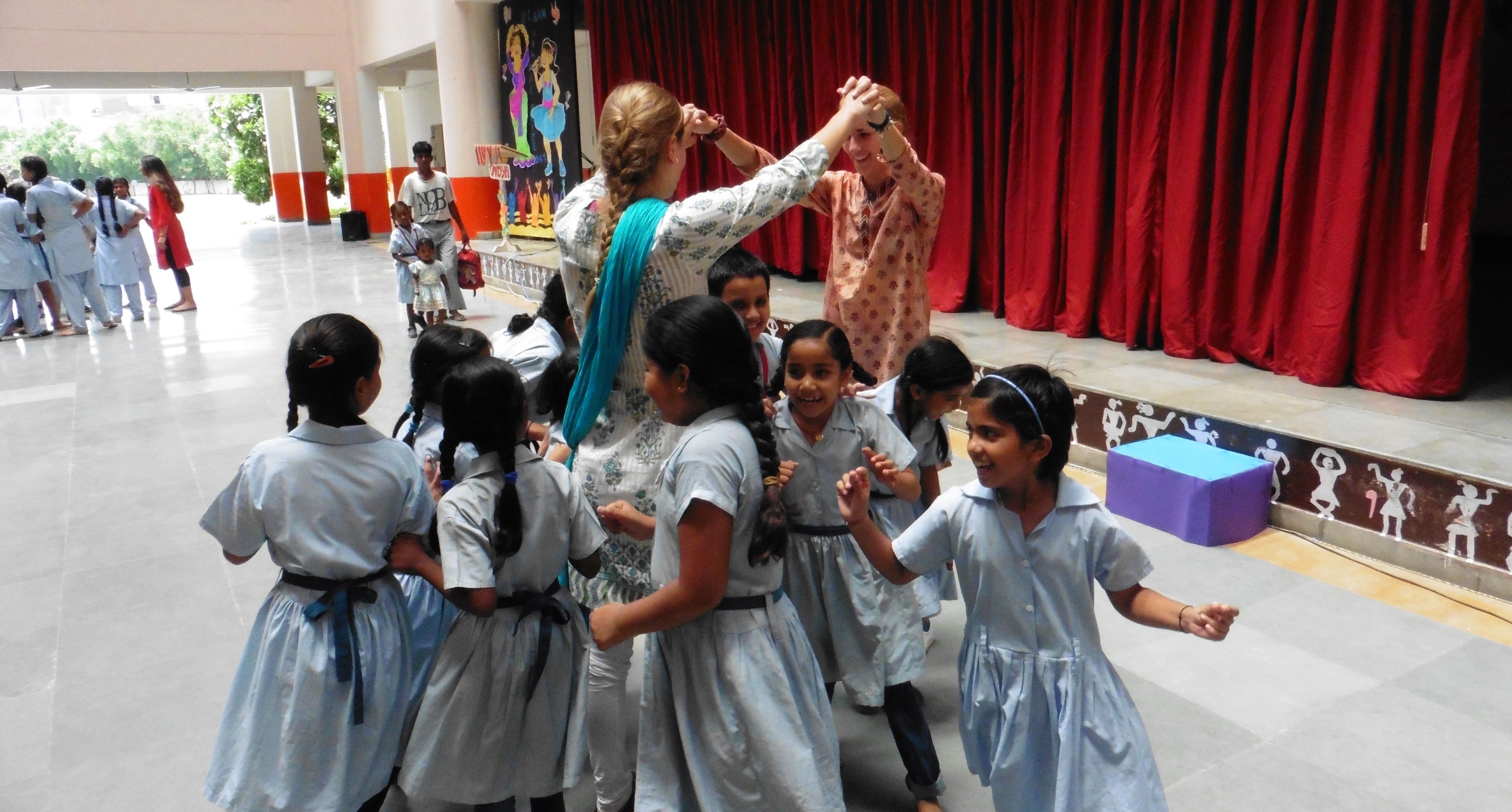
When planning to come to India I knew the language barrier would be a challenge, and I couldn’t predict how I would deal with it. My first encounter with the language barrier was on the first day of school when we were asking the kids to tell us their names. I was nervous about what their reactions to us messing up their names would be. Would they be annoyed with us or would they have no interest in having us learn how to say their names correctly? Both were wrong. The kids all thought it was hilarious when we would try to repeat their names back to them. They would say their name, and we would listen and try our best to say it back correctly (most times we were very wrong). Then the whole class would burst out laughing and they would all yell, “No, ma’am, that’s wrong!” and say their name again slower or break it up into syllables.
It became a game for them: how many times would they have to repeat their names until we said them correctly? Each time we messed up they would crack up, and when we said their name correctly the whole class would cheer. After this first experience in class, I realized they want to help us understand the names and it does not offend them to ask for them to repeat what they said a few times.

A few days later, after lunch, a lot of the kids were sitting around waiting to rehearse for the festival they would be preforming the next day. We were done with classes for the day so our team of volunteers decided to play a game of ninja. The second we started playing the kids stood up from their lines and surrounded us, so they could get a better view of the game we were playing. When our game finished we turned to the kids and asked who wanted to play with us. All of their hands shot up in the air and they ran over to get in a circle to begin. The demand to play was so great that we each took a group of kids so they could all get a chance to play. I took all the little girls and we began the game. They understood the gist of the game from watching us, but they did not know the rules. I started to explain the rules as we went, but everything I said was met with blank stares and glances between all the girls. I realized that they did not understand what I was saying. One of the older girls noticed the language barrier as well and stepped in to explain the rules of the game to the little girls.
“Playing games is a time when the language gap is bridged.”
In that moment I realized this simple game of trying to avoid getting hit in the forearms as you dodge the thrashing limbs of the people around you, is played in India as well. After the little girls were told the rules in Hindi we restarted the game. This time if I needed to tell them that hand was out or they were out of the game, I would use hand gestures and pair them with simple words. They began to pick up on the words and would say them when they saw me do the hand gestures.
This past week and all the circumstances in which I have had to navigate around the language barrier, I have learned that the times in which language was not a problem was when we were playing games. When they want to teach us a new game they put us in the spot we need to be in and have us follow their examples as well as use very simple words that they know in English. Playing games is a time when the language gap is bridged.
